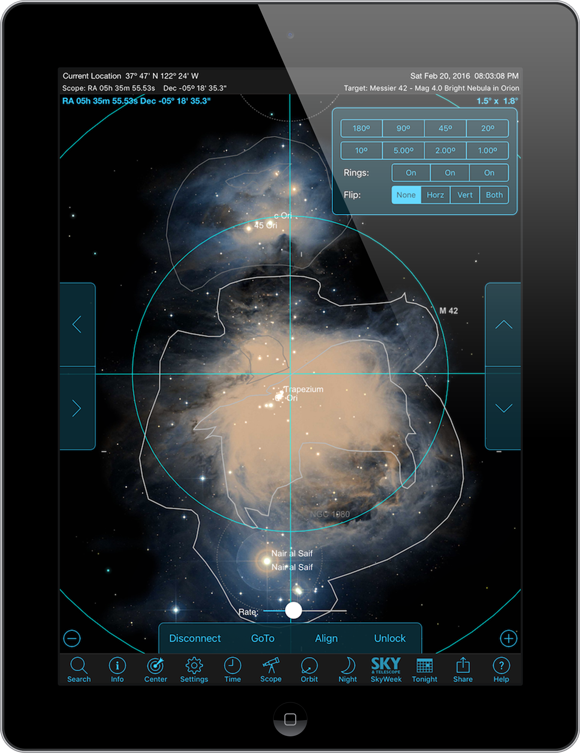

Measure & Correct Polar Alignment errors using solver.Įasy to use Polar Alignment Assistant tool. Load & Slew: Load a FITS image, slew to solved coordinates, and center the mount on the exact image coordinates in order to get the same desired frame.
#Skysafari plus see object elevation how to#
If you have clear skies now, get used to using the software to understand how to find bright objects like Mars, and then, when that pesky Moon goes away, you’ll be ready to find amazing dark sky objects like the Andromeda Galaxy.Control your telescope, Camera (& DSLRs), filter wheel, focuser, guider, adaptive optics unit, and any INDI-compatible auxiliary device from Ekos.īuilt-in native autoguiding with support for automatic dithering between exposures and support for Adaptive Optics devices in addition to traditional guiders.Įxtremely accurate GOTOs using solver (both Online and Offline solvers supported). There is a lot of different software that can do this, but I have a soft spot for Sky Safari because it’s not only easy to use but because the company behind Sky Safari has donated back proceeds from their sales to astronomy education many different times over the years. If you still want to try and see Andromeda with your eyes, one of the best tools to help is an app like Sky Safari that can use the GPS and sensors in your phone to figure out what part of the sky is behind your phone. The Andromeda galaxy is one of those many galaxies out there right now, shining just bright enough to be seen with your eyes if there is no Moon, which we have right now. For folks like me, who have done work observing galaxies, now is the time of year to spend at an observatory because we have a much clearer view out of our galaxy to all the other galaxies out there. The band of the Milky Way that passes near Orion as it spills across the sky is thinner and fainter than when we’re looking toward the Milky Way’s center in the summer. Right now, we are looking away from our galaxy’s center. One of the things we just don’t think about a lot is how we live inside a massive disk of stars, and as our planet swings around the sun, the part of that disk that we can see changes. That moon that is so very beautiful also makes seeing anything faint in the sky nearly impossible, and the best things in the sky right now are faint galaxies. (Or, if you’re in the southern hemisphere, may it bring you joy on these hot summer nights.) Whatever you call it, make sure you take a look at it, and may it bring you joy during these long winter nights. Between the rain in California and the snow in Illinois almost everywhere else, staying inside sounds like a good plan.

Although Stay Inside is good, too: simple, succinct, and honest. I suspect there is some influence of cold desert nights and pleasant winter days on that name. I feel almost energized hearing that name. What’s your favorite name? Personally, I like Moon of Life at its Height. And the Choctaw in the south call this moon Winter’s Little Brother. In the Pacific Northwest, the name is Stay Inside. In southwest Arizona, the Hopi called it Moon of Life at its Height. In Alaska, the Haida call it Bear-Hunting Moon. The Algonquin call this moon Sun Has Not Strength to Thaw. Other tribes have different names, of course, and we’re not going to attempt the native versions out of respect for the beauty of their languages.
#Skysafari plus see object elevation full#
According to an article in Indian Country Today, the closest known Native American name for this full moon is Wolves Run Together Moon from the Sioux. But Wolf Moon? Where does that name come from? Are we thinking of a lone wolf howling in the winter night? Or a pack of wolves hunting outside a hungry, cold village? There’s an easy tendency to think that it’s a Native American name, but that actually isn’t the case. Well, okay, we get Snow Moon and Hunger Moon. All these names evoke feelings of deep winter and isolation here in the northern hemisphere. This particular full moon has several names: the Wolf Moon, the Snow Moon, or the Hunger Moon. The brightest object in the night sky is the Moon, and tonight, it’s Full.


 0 kommentar(er)
0 kommentar(er)
